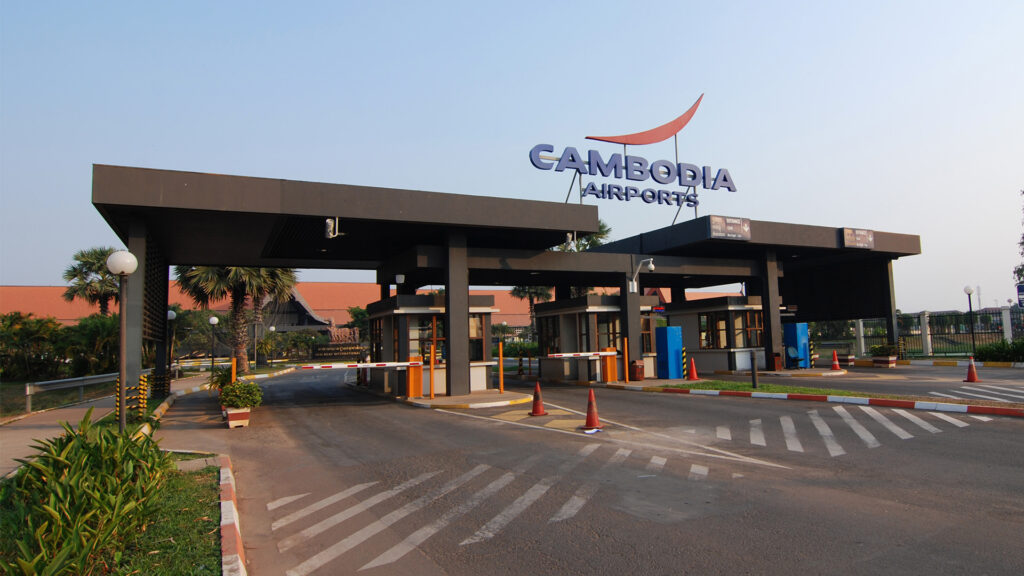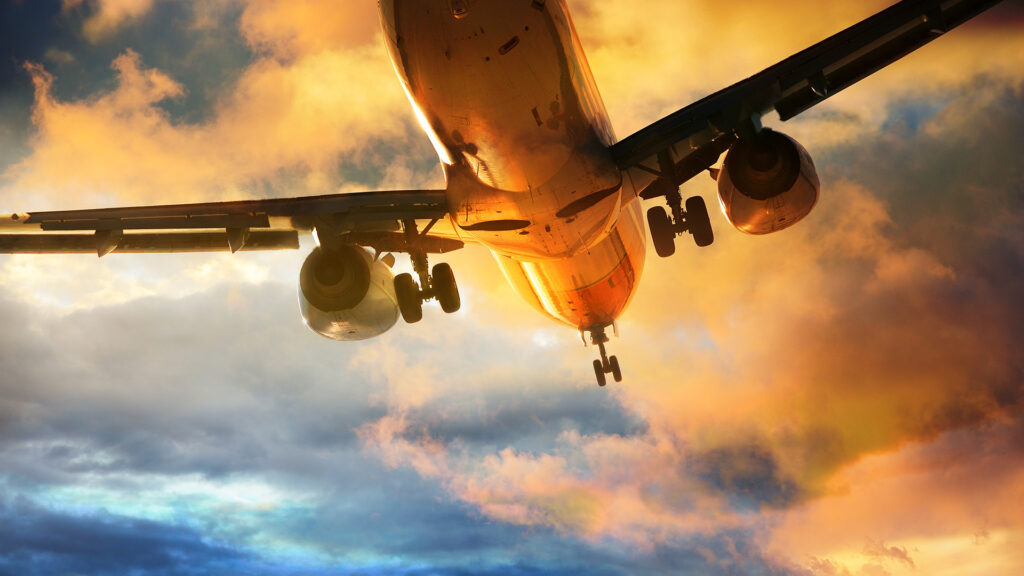
Future of Flight series: Urban air mobility – Challenges and Change
Our Future of Flight series considers the legal and regulatory challenges facing the aerospace industry due to the rapidly changing dynamics in the skies and on the ground.
From the emergence of new technologies to changing public perceptions and climate change, we explore the industry’s critical issues, highlighting the key risks and opportunities for industry stakeholders.
In the series’ first article, Aerospace Senior Associate James Jordan considers the legal and regulatory challenges of operating Vertical Take-off and Landing (VTOL) vehicles and the hurdles that lie ahead for the fledgling Urban Air Mobility (UAM) industry.
Background
After a world-first first test flight of an air taxi in an urban environment in Singapore at the end of October 1, there has been much excitement surrounding the future of the fledgling Urban Air Mobility (UAM) industry.
Commentators anticipate that Vertical Take-off and Landing (VTOL) vehicles will become a common sight in our cities’ skylines within the next five years.
As with any new technology, there are many unresolved issues with UAM posing legal and regulatory challenges that touch on most aspects of aviation, especially the areas of air traffic control / management as well as flight standards and certification. Other areas of concern also include environmental policy (noise and emissions), public use, land use (i.e. for vertiports / terminals), and liability / insurance arrangements.
Why now?
The UAM market is currently in its infancy, with the first commercialisation expected by 2023. However, its projected growth is significant; at a compound annual growth rate of 16.2% by 2030, with an estimated global value of US$3.1bn by 2023, accelerating to reach US$7.9bn by 2030 2.
Uber Air 3 has drawn the most public attention so far but a whole host of major aviation entities, from Airbus4 to NASA5, have UAM and VTOL design at the heart of their future plans.
|
The terminology UAM is an industry term used to describe the system that enables on-demand, highly automated, passenger or cargo-carrying air transportation services within and around a metropolitan environment, usually in low-altitude airspace. VTOL or Electric Vertical Take-off and Landing (eVTOL) vehicles are those aircraft best-suited to servicing the development of the UAM industry. VTOL, as the name suggests, refers to aircraft that can take off, hover, and land vertically. While it could include traditional aircraft types, such as helicopters, a new breed of VTOLs is being developed to service the anticipated needs of the UAM market. |
What are the benefits of VTOLs?
As urbanisation, population explosions, and the growth of mega-cities continues, governments and private companies must address infrastructure challenges.
VTOLs offer a potential solution to the issue of urban congestion; they minimise the need for a runaway and, in many cases, reduce the need for other modes of transportation to move passengers from those runways to their final destination.
VTOLs also offer more direct point-to-point transportation and, undoubtedly, their most compelling use cases are for urban air taxis and final-mile cargo deliveries.
What are the challenges of using VTOLs?
The development of the UAM market highlights critical regulatory and certification challenges that must be addressed in order to bring UAM transportation into mainstream consumer use.
As with any new aviation technology, the regulatory issues to be considered are numerous and complex. The two most significant from an operational perspective are:
1. Airspace management:
Maintaining an increasingly diverse airspace while keeping all air traffic moving safely and efficiently will be a significant challenge.
A key enabler for the future of UAM and VTOLs will be Unmanned Traffic Management (UTM) systems, which will need to work in conjunction with existing Air Traffic Control (ATC). UTM technology for the UAM market is still at a developmental stage and national regulatory bodies are unlikely to set out ATC guidance until the technology is ready for full deployment.
In the short-term, this will mean that permits for VTOL operations will be issued on a per flight basis and will, at least initially, limit the industry’s capacity and growth potential.
2. Certification:
How do regulators and policymakers certify an entirely new class of aircraft using a regulatory framework that was developed for traditional fixed-wing aircraft and rotorcraft?
Many national regulators are still wrestling with the task of providing a regulatory environment for small Unmanned Aerial Vehicles (UAV) with no payloads or passengers. VTOLs potentially add both of these complexities to an aircraft type which comes in both manned and unmanned formats. There have, however, been recent promising developments in Europe in the area of certification.
Europe: Leading the way on certification
The European Aviation and Space Agency (EASA) has pioneered VTOL certification through the issuance of a Special Condition 6 on 2 July 2019.
In the preamble to the Special Condition, EASA succinctly summarises the problems many certification authorities currently face when attempting to draft type certification regulations:
“[VTOLs have] the design characteristics of aeroplanes, rotorcraft or both” meaning that the EASA was “not able to classify these new vehicles as being either a conventional aeroplane or a rotorcraft as covered by the existing certification specifications”.7
Notwithstanding the challenges, the EASA has developed certification requirements, which apply to “small VTOLs” with the Special Condition applying to:
- aircraft with a passenger seating configuration of 9 or less; and
- a maximum certified take-off mass up to 3175 kg.
EASA’s VTOL proposal is the first step in a process that will enable a regulatory framework for the safe operation and certification of VTOL aircraft in Europe.
Elsewhere, the Civil Aviation Administration of China (CAAC) announced earlier this year that it will issue guidance on unmanned aerial vehicle airworthiness certification after consulting with five Chinese VTOL manufacturers 8.
The extent to which the CAAC regulations will also cover manned VTOL operations is still under consideration.
Legal implications
The legal issues surrounding UAM and VTOLs are myriad and include:
- risk allocation and liability for damage caused by accidents
- contractual arrangements with end users (i.e. passengers or shippers)
- mandatory insurance limits to ensure adequate public protection
- cyber security and physical safety due to closer operating proximity to potentially malicious actors
- environmental law applicable to noise and land uses
- responsibility for inspection of unmanned VTOLs before flight (like pilots currently do for traditional aircraft)
While it is impossible to consider all of the potential legal issues in this briefing, a closer examination of the potential liability exposures and the management of such exposures warrants further consideration.
Liability exposures
The liability regimes for the carriage of passengers and cargo on board traditional civil aircraft have developed since the origin of commercial flights in the 1920s. International efforts have led to the development of recognised legal regimes, such as the Warsaw Convention 1929 and the Montreal Convention 1999, with principles from both conventions regularly incepted into national laws concerning domestic carriage.
Arguably, the current liability regimes for passenger aircraft could apply to ticketed passengers taking flights on board VTOLs. That said, the traditional framework is unlikely to be fit for purpose for on-demand/flight-hailing services (i.e. Uber for aircraft); the business model that most UAM providers are likely to utilise.
Operators’ liability exposures could be significant in the event that an accident occurs in a busy urban environment, due to the potential to cause injury not just to passengers but also individuals on the ground or in nearby buildings. Any potential accident scenarios are more likely to resemble automobile accidents (albeit more catastrophic) rather than traditional aircraft accidents.
In order to facilitate safe flights and reduce the traveling public’s barriers to adoption, national legislators need to consider whether existing laws are fit for purpose or whether a new legal liability regime is needed to specifically deal with the unique risk exposures of high-volume urban flight. If national legislators truly wish to foster a safe environment in which the UAM industry can develop, while also maintaining the trust and safety of the public, we advocate the latter.
Risk management: Contracts and insurance
While there will be no shortage of insurance companies willing to provide cover for flying taxi companies and other VTOL operators, it is likely that this technology will pose a significant disruption to current insurance models for individuals, operators and insurance companies.
While hull and physical damage coverages are likely to be similar to existing aviation coverages, liability scenarios will change as VTOLs spend more time than existing aircraft forms hovering above densely populated areas.
It is likely that any new laws that are created to govern liability exposures will deal with minimum insurance requirements, thus requiring insurers to innovate in order to provide a satisfactory product that benefits industry stakeholders.
Recent lessons learnt by the insurance community from developments in the UAV/drone market have demonstrated that traditional policy wordings (such as AVN1C) are probably not fit for purposes when it comes to insuring new technology, such as VTOLs, and new insurance policy wordings will need to be developed.
Manufacturers and operators will also need to consider how to apportion liability amongst themselves, as well as the risks that they are willing to pass onto end users via their contractual and/or ticketing arrangements. A careful balance will need to be struck as any attempts to shift the risk on to the end user by utilising robust indemnity and liability wording to protect operators could significantly undermine confidence in the industry.
Looking ahead
Many city administrators have put Smart City policies at the centre of their plans, with UAM a core component.
While the timescale for full deployment is uncertain and many obstacles still lie in wait from a regulatory and legal perspective, UAM and VTOLs undoubtedly have a part to play in the future development of urban environments.
In order for this game-changing technology to truly emerge, it is important that all industry stakeholders lobby governments and regulators to provide a sympathetic legal and regulatory framework that will allow the technology to develop in a safe and open environment.
If this happens, flying to work may be on the horizon sooner than you think!
How HFW can help
We are a leading law firm in the aerospace sector, with a strong focus on emerging technology. Recent examples of our relevant work include acting for/advising:
- Leading manufacturer – dispute arising out of a UAV demo flight
- Landmark drones manufacturer – customs regulations for UAV exportsUrban delivery company – future potential use of UAVs for parcel delivery
- Insurance company – on the use of UAVs for conducting aerial surveys in the aftermath of natural disaster
- UAVs and drones – drafting bespoke insurance policy wording.
- Various UAV service providers – drafting contracts and terms and conditions.
- Multiple aerospace manufacturers – on EASA and national safety regulation and compliance, including representing a manufacturer in its appeal to the EASA Board of Appeal (the first appeal of its kind) in relation to refusal of approval for a repair scheme.
For further information on the topics covered in the Future of Flight series or on any connected issues, please contact the author:
James Jordan
Senior Associate, Singapore
D +65 6411 5374
M +65 8123 3558
E james.jordan@hfw.com
Footnotes
- https://www.straitstimes.com/singapore/flying-taxi-goes-for-test-spin-in-marina-bay
- https://www.reportsanddata.com/report-detail/urban-air-mobility-market
- https://www.uber.com/us/en/elevate/uberair/
- https://www.airbus.com/innovation/urban-air-mobility/vehicle-demonstrators/cityairbus.html
- https://technology.nasa.gov/patent/LAR-TOPS-230
- https://www.easa.europa.eu/sites/default/files/dfu/SC-VTOL-01.pdf
- Ibid.
- https://www.prnewswire.com/news-releases/caac-issued-guidance-on-uav-airworthiness-certification-300796629.html
Download a PDF version of ‘Future of Flight series: Urban air mobility – Challenges and Change’











